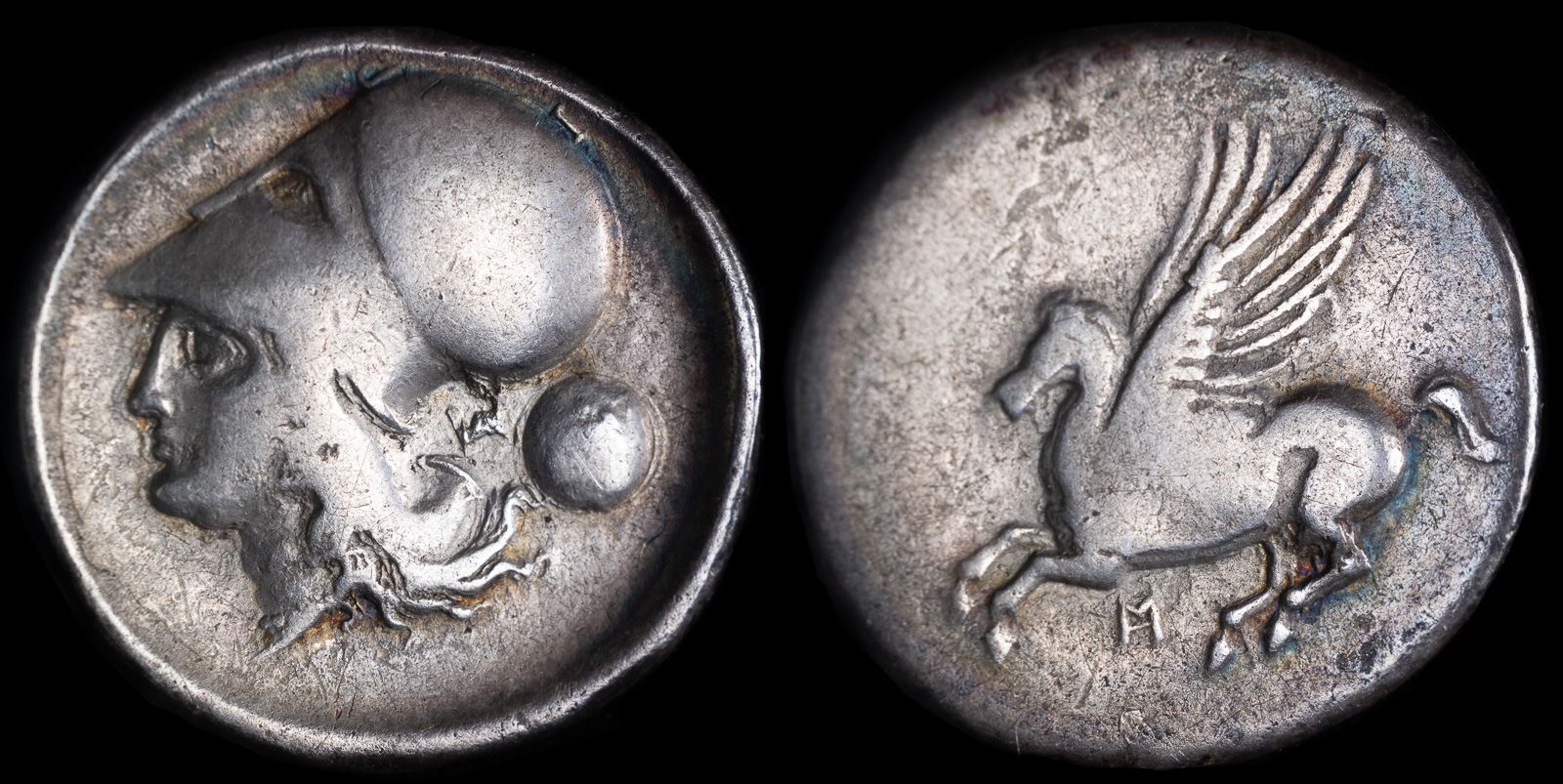
ca 300-250 BCE
AR Stater, 8.27g
Obv: Pegasus flying l., M below.
Rx: Head of Athena l.; monogram and Macedonian shield behind.
Calciati-1/4 (same obv. die), BM-1, Weber-3867
What caught me about the descriptions for this coin is the “spot” next to the helmte on the obverse is described as “Macedonian shields.” Yes, mine look a bit more like a balloon, but given the rarity I was happy to sacrifice a bit of quality and both coins look far better in hand.
This made me wonder, is this a Macedonian Shield Coin coins? That would imply they were in league with Philip II (or Alexander III). But what about the other Akarnanian cities? Why didn’t they have shields? Note that I also have coins from several other Akarnanian cities, but they’re bronze. However, AFAICT, only Miletopolis and Koronta included any shields on their coins.
I managed to find this paper, by Carl Roebuck in which he mentions in the comments:
…contributions of the members of the “Hellenic League” add the Acarnanians and all the Peloponnesians; but Acarnania seems to have been divided in loyalty
The paper covers the initial states that were against Philip II‘s subjugation of the Greek cities and how he played politics to get around this. Unfortunately, I couldn’t find much more, but I did map out the various Akarnanian cities known for their coinage.
From that, Koronta and Metropolis were among the easiest to access from the rest of Greece. Could Macedonian troops have been there? Or did the two cities have historical ties to Macedon? While there is evidence that both were members of the Akarnanian League, my suspicion is they were partial to Macedon and therefore not in line with the other Akarnanian cities in opposing Philip II.
Unless there’s some article I’m missing (and that’s likely), this could be one case where coinage provides us history that has otherwise disappeared. Of course, it’s possible that this is someone else’s shield, but better copies clearly show a gorgon and pattern that appear on bronze MSC’s, so the identification as Macedonian seems strong. I did try to figure out which reference made this original attribution, but I have none of those typically cited, nor could I find them online.
However, it does appear that these are either MSC’s or “semi-MSCs” (because the shield is only a small part of the reverse – I don’t know what the official requirement is) and that they indicate that the cities favored Macedon at a time when many of their compatriots didn’t.
Relevant Resources
Link
The Settlements of Philip II with the Greek States in 338 B.C.